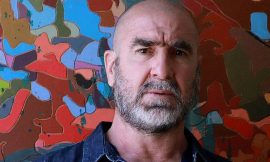Cyclists flood the streets of Paris, creating a daily scene in the capital. “It’s crazy, now there are even little bike traffic jams during rush hour,” notes one cycling enthusiast.
This growing enthusiasm can also be seen in the record-breaking numbers for the month of September. Bike counters installed by the City of Paris on all major cycling routes have skyrocketed. For example, the use of the bicycle highway on rue de Rivoli (1st and 4th arrondissements) – the second most heavily used in the capital – has jumped by over 30% compared to last year, with 388,369 passages in September, compared to 297,350 in September 2022.
Still in the lead, the two-way bike path on boulevard de Sébastopol (Paris Centre) also saw an increase of nearly 16% between September 2022 and September 2023. Last month, its counters saw 540,087 cyclists pass through, with peaks of over 20,000 passages per day.
The irresistible rise of the bicycle no longer surprises the specialists. “Every year, especially in the fall, we see exponential increases,” comments Marion Soulet, spokesperson for the association Paris en selle. The weather is still favorable, and there is undoubtedly a New Year’s resolution effect.
But the well-intentioned new cyclists seem to be transforming their efforts. “There may be a small portion of the flow that is drying up, but overall, the levels remain high and increase from year to year,” says Marion Soulet. The myth of deserted bike lanes in winter is not true. For example, nearly 275,000 bicycles were counted on boulevard de Sébastopol in December 2022.
According to her, the key to this success lies in three criteria: “It is a cheap, efficient, and fast mode of transportation.” Another factor since September 1st is the end of dockless scooters within the city, with a likely shift of some of the 400,000 regular users towards bicycles. The three operators concerned have all announced the strengthening of their electric bike fleets.
“But the main explanation for this increase in cyclists can be found in cycling infrastructure,” insists David Belliard, Deputy Mayor (EELV) in charge of transportation. “We continue to implement the cycling plan with 84 km of bike lanes and greenways that have already been created since the start of the term in 2020.”
“The more bike lanes there are, the more cyclists there are,” adds Camille Hanuise, a consultant in urban planning and cycling policies. “Supply creates demand when it comes to bicycles. The new secure facilities allow a variety of people to use bicycles for their daily commutes.”
The construction of new lanes is expected to attract more cyclists in the years to come. But will there be enough space for all these pedalers? “Hence the importance of creating facilities not for the cyclists we have today, but while thinking about those we will have tomorrow or in five or ten years,” warns Camille Hanuise. “These are major road works that cannot be redone every two or three years.”
An anticipation that has been lacking on certain Parisian routes, now regularly congested during rush hour. “There are several infrastructures, especially Sébastopol, that were delivered in 2019 and are now clearly undersized,” admits David Belliard. “We are looking for solutions, but we do not have control over the entire road network. These saturated lanes – like Rivoli, Sébastopol, or Boulevard de l’Hôpital – often depend on the Paris police prefecture, which hinders their expansion. What is always blocking is the reduction of space for cars.”
When contacted, the police prefecture responded that it had, in some cases, “issued unfavorable opinions or recommendations for modifications on projects that would hinder the circulation of emergency services or police or firefighters.” As for the conversion of the Sébastopol bike path, it states that “no project from the City is being studied, to the knowledge of its services.”
To avoid congestion, Marion Soulet believes in the need for “better sharing of space between cyclists and motorists.” “The car represents 10% of trips and 50% of the public space is dedicated to it,” she points out. To relieve the bike lanes, some also recommend developing cycling alternatives to these major routes. “That’s what we did with the new bike path on rue du Renard, which is parallel to Sébastopol,” explains Anne Hidalgo’s deputy. However, Altis Play, a YouTuber who popularizes “mobility in urban spaces” on a dedicated channel, believes this will mainly attract new cyclists, rather than emptying Sébastopol.
For this experienced user, salvation will come from public transportation, which many new cyclists have reportedly abandoned “due to their progressive deterioration.” “If we improve cycling infrastructure without improving transportation, we will end up with a saturation of bicycles,” he predicts. “In an extremely dense city like Paris, cycling should remain an alternative, but it should not be the only solution.”



